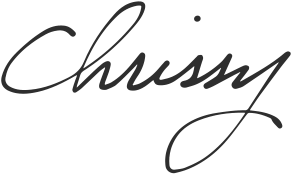The Serratus Anterior is probably my favorite muscle. I love how its name describes its appearance (the zig-zag shape it makes from the scapulae to the ribs resembles a serrated knife). I love how it helps to stabilize the scapulo-thoracic joint. I love a strong, intelligent Serratus can create more support in postures like Chaturanga, Adho Mukha Svanasana, and Handstand. Being a lover of the Serratus, I (falsely) assumed that mine was rock solid. A few handstands with my palms turned out 90 degrees revealed that there’s some (ahem) room for improvement. I’ve been on a serratus-strengthening mission ever since.
We explore many relationships with gravity in our asana practice, but one of the most challenging is moving slowly into the gravitational pull of the floor. It takes tremendous strength and control to lower slowly and gracefully towards the ground. If we let gravity do the work, we’ll almost certainly sink into our joints. Done repetitively, as is the case with Plank and Chaturanga, this sinking may cause stress-related injuries to the shoulders, wrists and lower back.
In order to slow ourselves down, we have to oppose this outside force by asking our muscles to do the opposite. As we bend our elbows and lower ourselves towards the floor, gravity (if left to its own devices) drags the shoulder blades together. The serratus anterior stabilizes the shoulder blades in Plank and Chaturanga by pulling them apart against the force of gravity. This action stabilizes the shoulder joint, which (and now please devote your undivided attention to this next little morsel of anatomical information) is the most mobile joint in the human body. More mobility equals less stability: a useful tidbit to keep in the back of your mind as you plow through your twentieth Chaturanga. Downdog, Dolphin, Handstand, Forearmstand and Headstand all require a strong and knowledgable serratus anterior. A devoted (but non-obsessive) practice of serratus-strengthening/awareness exercises can help us resist gravity and offer stability in postures we do repetitively in our yoga practice.
Serratus “Push-Ups”
Come to hands and knees. Keeping your elbows straight, inhale and slowly sink into your shoulder blades (it will feel like you’re just “hanging out” in your shoulders). Exhale and slowly push the floor away with your hands, lifting out of your shoulders until your upper back rounds (like Cat Pose). Repeat slowly. You can up the ante by straightening your legs into Plank, but that’s serious business (you’ve been warned)!
Tricky Cat
My DC trainees referred to this one as “Wicked Kitty”, which should tell you everything you need to know! Begin on hands and knees. Push the floor away with your hands, which spreads your shoulder blades apart and rounds your upper back. Maintaining this action, simultaneously broaden across your collar bones. These two actions, performed at the same time, stabilize your shoulder blades on your back. Shift your weight into your right hand and slowly lift the left arm straight out to the left. Notice the tendency to sink into your right shoulder and continue to push down into your right hand and lift out of the shoulder. Repeat on the other side. If you’d like to make this more challenging, reach the lifted arm forward along side your ear!
Gomukasana Arms
The bottom shoulder gets quite a beating in this arm variation. The bottom arm is in a position of internal rotation and extension, which is a potentially harry situation for your shoulder. Instead of trying to slam your bottom shoulder back, try moving from your shoulder blade. Move the inner border (which parallels your spine) of your scapula towards your chest. The inner border will want to “wing” away from your body, so think about trying to glue it back on. This action will move your bottom arm back in space but may also cause your front ribs to poke forward. The action of moving your front ribs towards your spine engages serratus anterior and balances the work. A minute of this and I’m dripping in sweat.
Handstand: Arms Rotated Open 90 Degrees
Not for the faint of heart. Turn your arms out so your fingertips are facing the sides of the room. Work those opposing actions from Tricky Cat: pushing the floor away to lift out of your shoulders as you simultaneously broaden across your collar bones. It’s a sobering exercise. Good news: a classic Handstand will feel like a breeze after you finish the variation. It’s all relative!
Downdog: Head Supported on a Block
Externally-rotating the upper arms is an important action in Downdog, as it places the arm in the best possible position in the shoulder socket. The muscles that turn the arm externally are also responsible for drawing the head of the humerus deeper into what is actually a very shallow socket, therefore creating stability in a weight-bearing posture. Rather than thinking about rotation solely from the arm itself, think about the shoulder blades as the initiator. Wrap the outer border of your shoulder blades around the ribcage from back to front, as if they could touch at the front of your chest. Balance that action by spreading across your collar bones. Taking the hands wider than shoulder-width apart (and turning the palms out slightly) can help to make more space.






For more serratus work. Get into a handstand (Either freestanding or being supported by a wall) slowly press your feet toward the ceiling as high as possible. Hold the position for a few seconds and then slowly lower down to the starting position. Repeat for a few repetions.